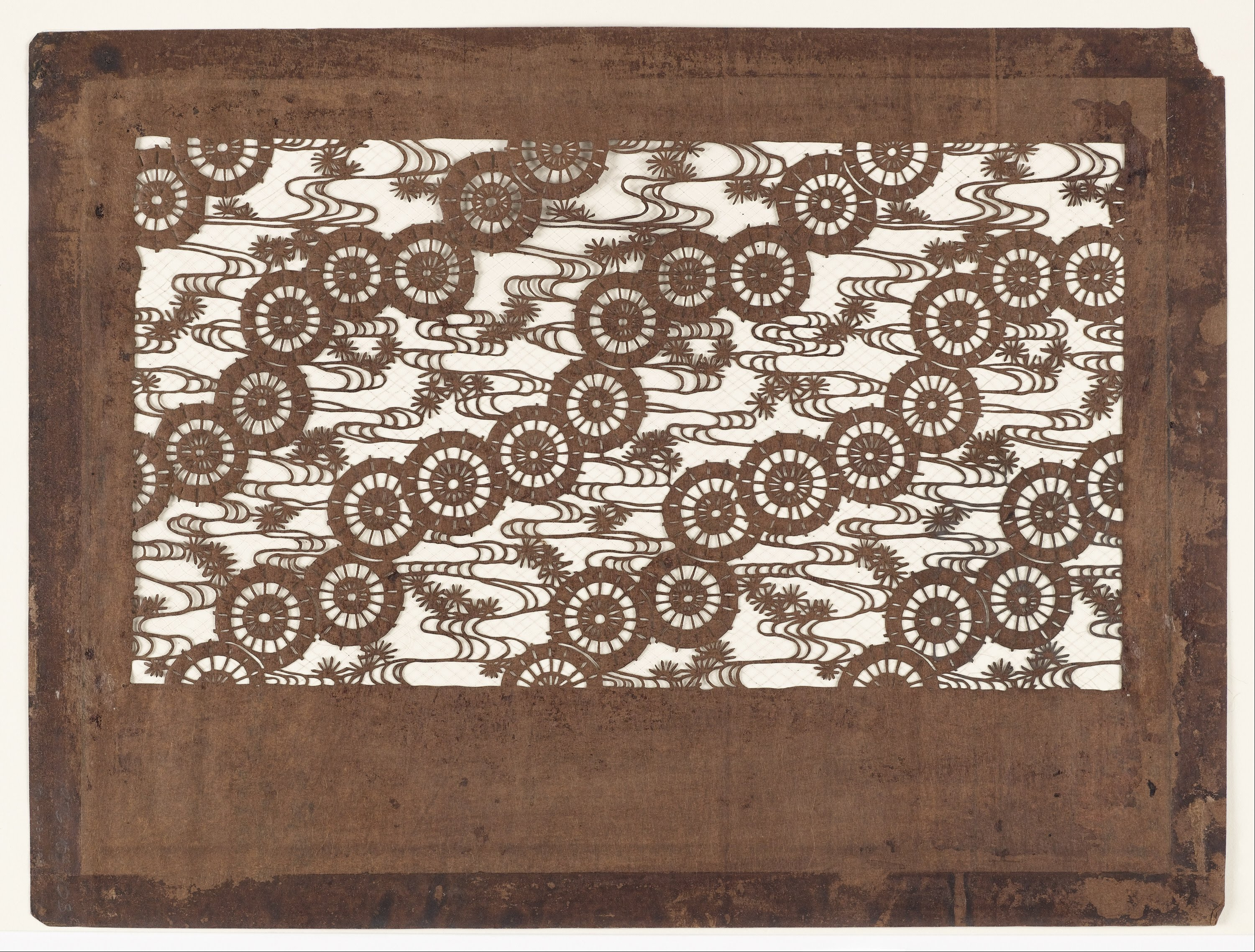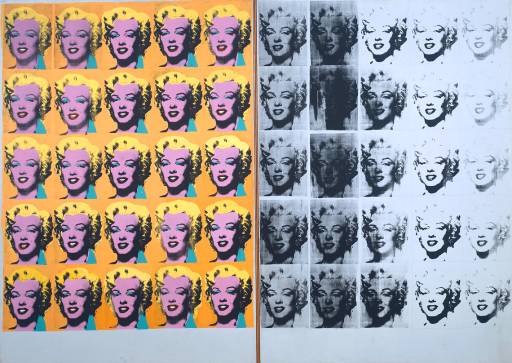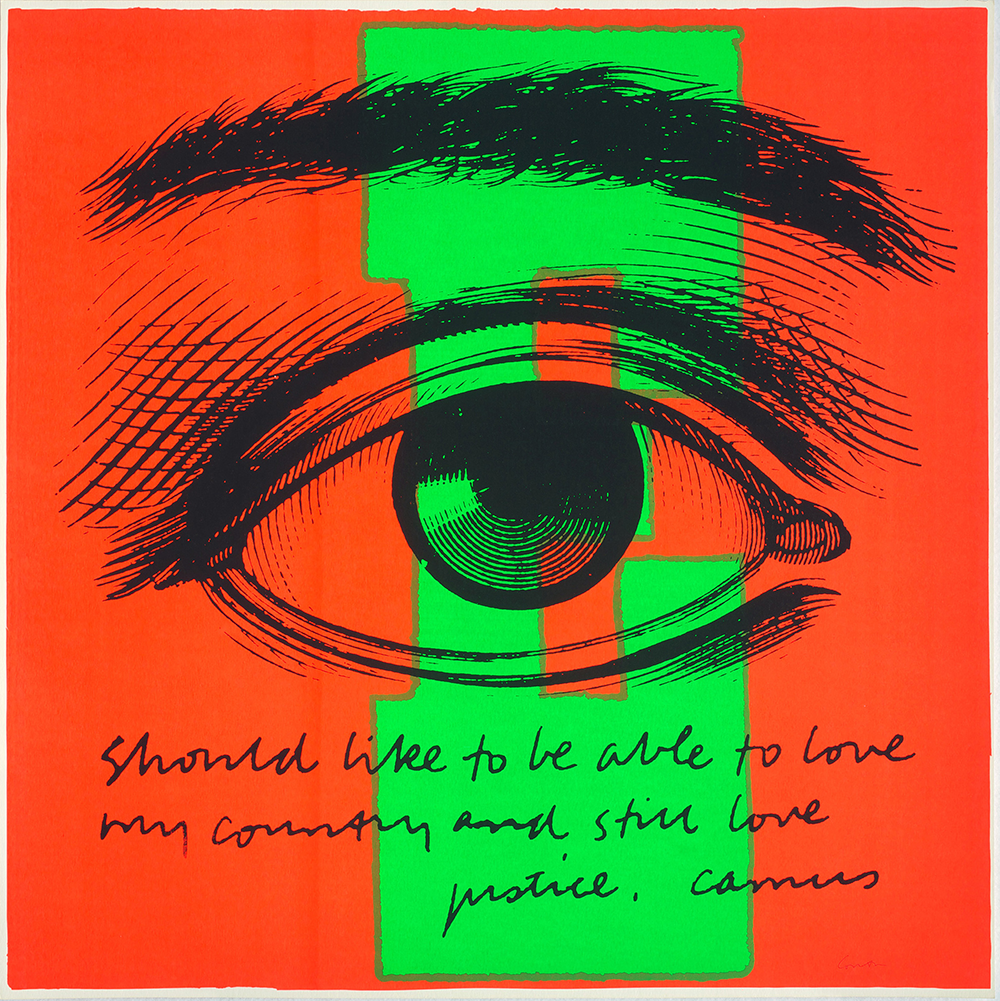Sep 22

The History of Screen Printing: From Katagami to Warhol
Posted by Choke Print Shop
In our last post we gave you a little bit of our history with screen printing, and in our next post we’ll be looking and how a modern screen printing studio operates. But the technology we use today has come a long way, and we’d like to take you back through the history of transferring designs by pressing ink through a stenciled porous screen and the roots of the art for serigraphy.
BEGINNINGS
The first known use of screen printing technique was actually by the ancient Polynesians, who would force ink through holes cut into banana leaves to make prints. And yet, silk screening is almost always attributed to the Chinese, who were using forced ink techniques to create images of Buddha as early as 960 AD, the beginning of the Song dynasty.
The Japanese soon adopted this technique and improved upon it, creating an art form called katagami, which is the creation of intricate paper stencils for dying textiles. The Japanese would layer several sheets of washi paper bonded with glue extracted from the persimmon fruit, making a strong, flexible, brown-colored sheet. The sheet was cut with patterns, the delicate pieces of which were then stabilized on a screen built from a fine silk mesh. Originally, the Japanese used human hair to create this net, but hair gradually replaced the silk because it is stronger.
The artisans would then pass rice paste through the screen and stencil and onto the fabric; that area would not be dyed, allowing them to pattern large swaths of fabric by repeated stenciling. This technique is how kimonos were originally created, and katagami is now an element of the Important Intangible Cultural Properties of Japan. If you expand the picture below, you can see the fine silk threads behind the washi stencil:

MODERN REPURPOSING
The West mostly ignored silk screening until after the 20th century had already begun. Silk was expensive and rare outside of Asia. But in 1907, Samuel Simon of Manchester, England patented the screen printing process in order to make fancy wallpaper for wealthy families; his technique quickly became a popular way to create not only wallpaper but advertisements. Silk was replaced with polyester mesh, and in the 1960s people were using screen printing on clothing and especially T-shirts, a garment no one had every printed on before.
SERIGRAPHY
The 1960s were also when screen printing became a legitimate art form, and many American artists experimented with the technique. To distinguish artistic screen printing from industrial, it became known as serigraphy. Andy Warhol’s 1962 print of Marilyn Monroe was one of the break-out stars of serigraphy, as was the work of Sister Mary Corita Kent, whose political serigraphy rose to international fame.


Especially since the serigraphy movement, it’s been near impossible for any screen printers not to think of their work in terms of an art form. Here at Choke, it’s definitely always on our mind. Our clothing line of shirts we design through Choke Clothing Company is pretty clearly a creative expression, but we like to think our work here at Choke Printing Company is, too. We can promise you that the attention we give to color, design, and creation is that of an artist, and this is probably why we have so many satisfied customers!




